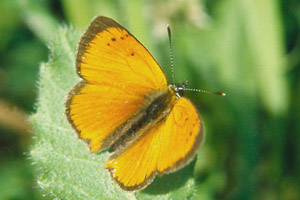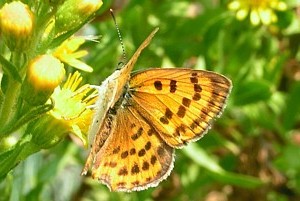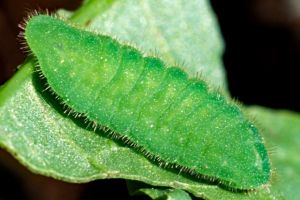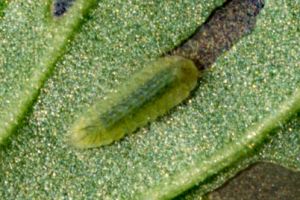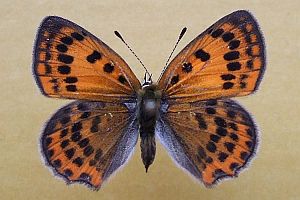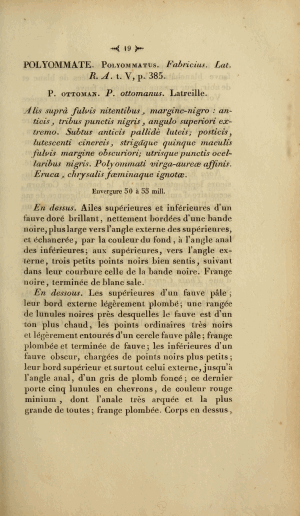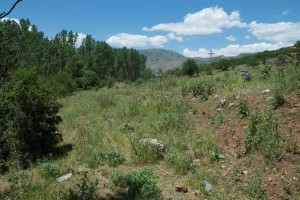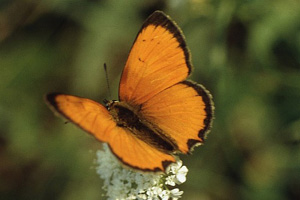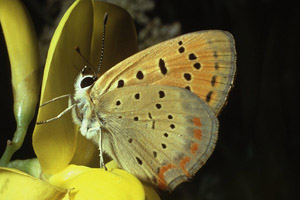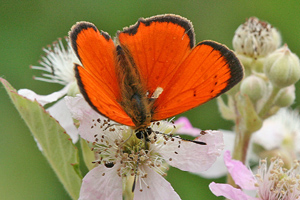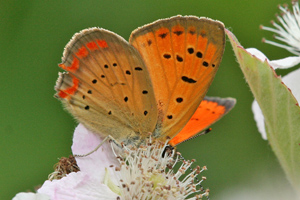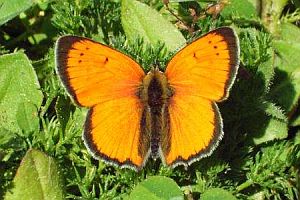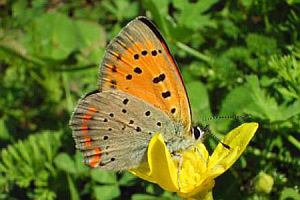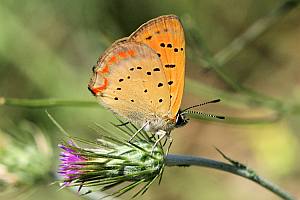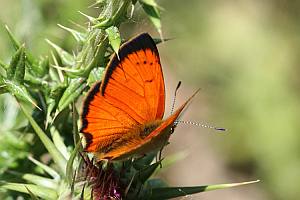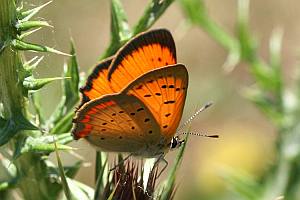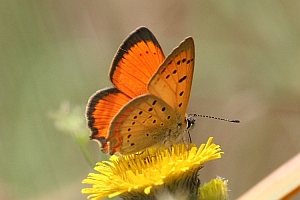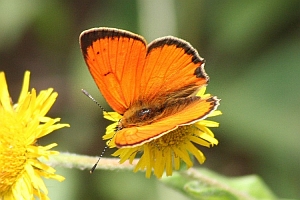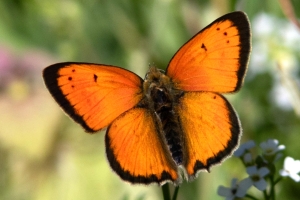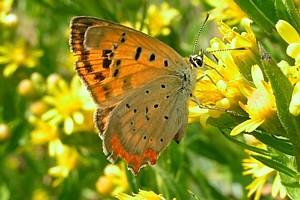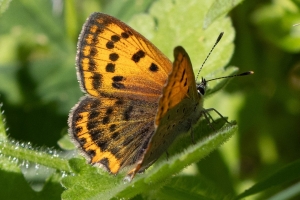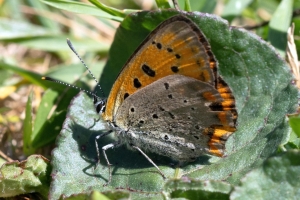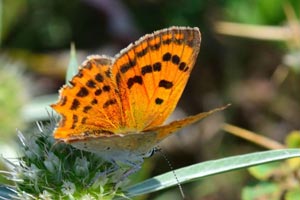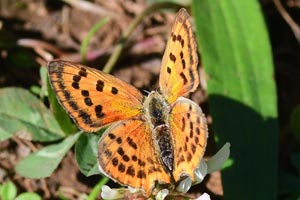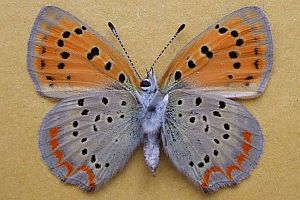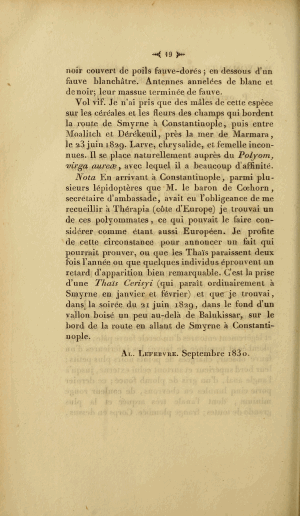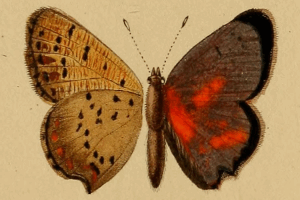

 +9Kontinente:EUAS
+9Kontinente:EUAS1. Lebendfotos
1.1. Männchen
1.2. Weibchen
1.3. Ausgewachsene Raupe
1.4. Jüngere Raupenstadien
2. Diagnose
2.1. Weibchen
2.2. Erstbeschreibung
3. Biologie
3.1. Habitat
4. Weitere Informationen
4.1. Etymologie (Namenserklärung)
„der Osmane, Türke.“
4.2. Abweichende Schreibweisen
- Lycaena ottomana (Lefèbvre, [1831]) [in (angeblicher oder tatsächlicher?) Übereinstimmung mit dem Gender Agreement (Artikel 34.2. der 4. Ausgabe (2000) des ICZN)] [so bei Wiemers et al. (2018)]
- Lycaena ottomana (Lefèbvre, 1831) [so z.B. bei Kudrna et al. (2011) und Tshikolovets (2011) in Übereinstimmung mit dem Gender Agreement (Artikel 34.2. der 4. Ausgabe (2000) des ICZN)]
4.3. Andere Kombinationen
- Polyommatus ottomanus Lefèbvre, 1830 [Originalkombination]
4.4. Nomenklatur
Wiemers et al. (2018: 40-42) stellen fest, dass Polyommatus ottomanus Lefèbvre, 1831 jüngeres Synonym zu Lycaena legeri Freyer, 1830 ist. Um den gewohnten Namen erhalten zu können, stellen sie einen Antrag bei der ICZN: "Evidence that the junior synonym Polyommatus ottomanus Lefèbvre, 1831 has been used to denote the taxon currently known as Lycaena ottomana (Lefèbvre, [1831]), in at least 25 works, published by at least 10 authors during the last 50 years and encompassing a span of not less than 10 years, and thus fulfilling the conditions of article 23.9.1.2 of the code in order to reverse the precedence of Lycaena legeri Freyer, 1830. Already during the decades immediately following the publication of legeri Freyer, this name does not seem to have been used but as a subjective junior synonym of ottomanus Lefèbvre. The latter name was thought to represent the valid name and was first used in its original combination (Polyommatus ottomanus) and starting from the 20th century mostly in the combination of Chrysophanus ottomanus". Ich unterstütze diesen Antrag gerne, wundere mich aber, dass er ausgerechnet aus einem Personenkreis kommt, von dem mehrere Herren maßgeblich an der Vernichtung von "Maculinea" und H. alcyone beteiligt sind.
4.5. Verbreitung
In Europa auf den Südosten beschränkt (Montenegro, Mazedonien, Albanien, Bulgarien, Griechenland, europäische Türkei). Darüber hinaus auch an der Südküste des asiatischen Teils der Türkei.
4.6. Publikationsdatum der Erstbeschreibung
Wiemers et al. (2018) erläutern: "The year of the publication of the name Polyommatus ottomanus is 1831, not 1830. Lefèbvre cited the date 1830, which corresponds to the date of submission of his article, but the issue of the journal was published in January 1831. See Lefèbvre (1831)."
Die Jahreszahl 1831 ist ohne eckige Klammern anzugeben, weil sie auf dem Titelblatt von Heft 2 abgedruckt ist, also nicht indirekt erschlossen werden muss. Dass die Arbeit im Januar 1831 herausgegeben wurde, kann nur stimmen, wenn das Heft 2 in Teilen herausgegeben wurde (, wozu wir keinen Hinweis finden). Der letzte Artikel des Heftes trägt das submission date « Mai 1831. » [p. 40, Digitalisat auf biodiversitylibrary.org], die beiden Artikel davor jeweils das Einreichungsdatum Juni 1831 [p. 38, Digitalisat auf biodiversitylibrary.org]. Dies dürfte dann auch der frühestmögliche Zeitpunkt des Erscheinens des Heftes gewesen sein.
(Autoren: Erwin Rennwald und Jürgen Rodeland)
4.7. Literatur
- Kudrna, O., Harpke, A., Lux, K., Pennerstorfer, J., Schweiger, O., Settele, J. & M. Wiemers (2011): Distribution atlas of butterflies in Europe. – 576 S.; Halle a.d. Saale (Gesellschaft für Schmetterlingsschutz e.V.).
- Erstbeschreibung: Lefebvre, A. (1831): Polyommate. Polyommatus. Fabricius. Lat. R. A. t. V., p. 385. P. ottoman. P. ottomanus. Latreille. — Magasin de zoologie 1 (2): 19-19 [sic, Seitenzahl zweimal vergeben], pl. 19. Paris (Lequien Fils).
- Meyer-Westfeld, N. (1976): Heodes ottomanus, ein Zuchtbericht (Lep., Lycaenidae). — Entomologische Zeitschrift 86 (11): 108-111. Ex libris Jürgen Rodeland.
- Tshikolovets, V. V. (2011): Butterflies of Europe & the Mediterranean area. - 544 S.: Pardubice, Czech Republik (Tshikolovets Puplications).
- Wiemers, M., Balletto, E., Dincã, V., Fric, Z.F., Lamas, G., Lukhtanov, V., Munguira, M.L., Swaay, C.A.M. van, Vila, R., Vliegenthart, A., Wahlberg, N. & R. Verovnik (2018): An updated checklist of the European Butterflies (Lepidoptera, Papilionoidea). — ZooKeys 811: 9–45. [zum open-access-Artikel auf zookeys.pensoft.net]









